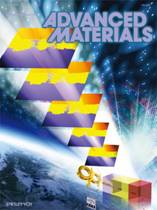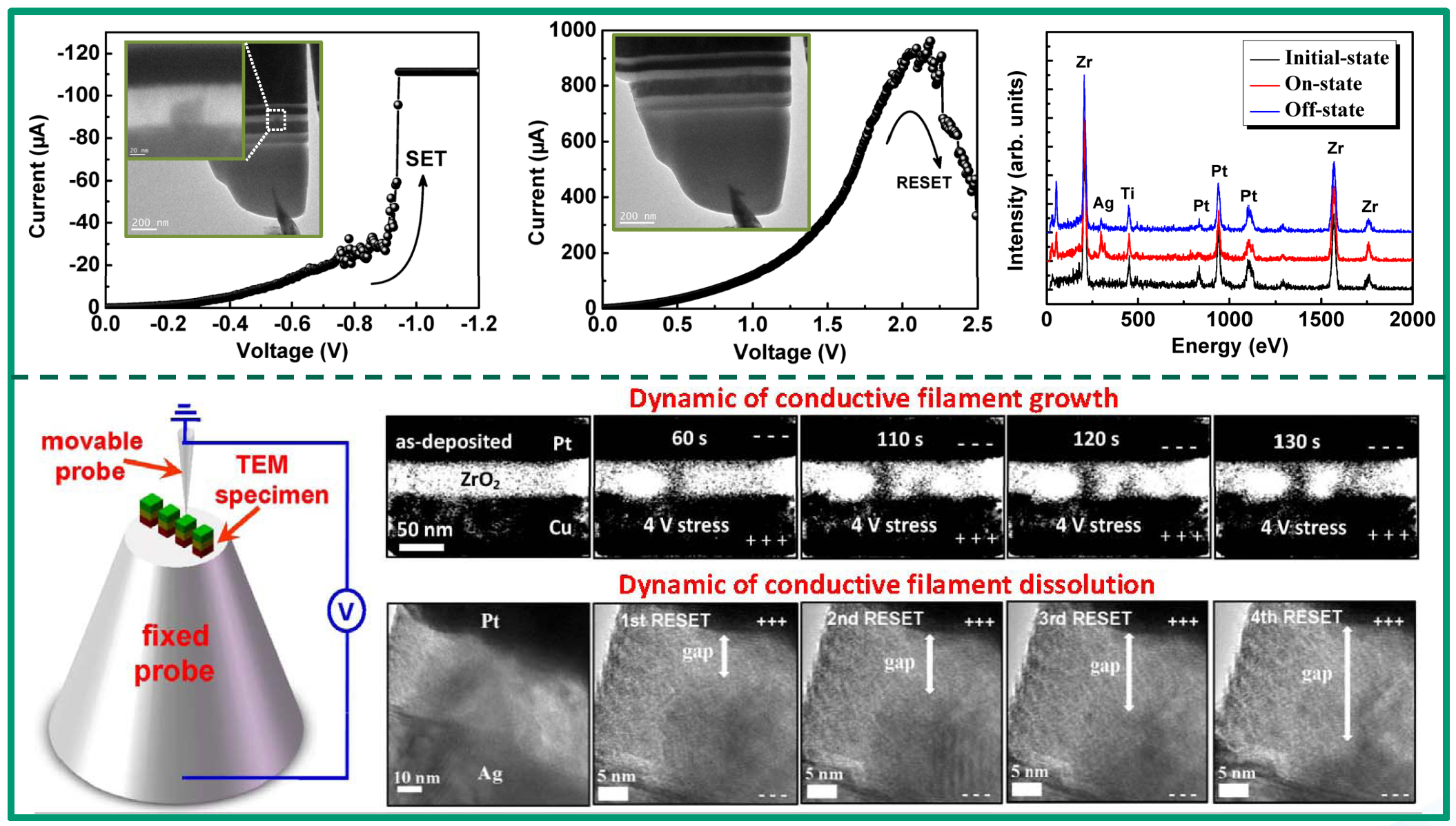|
Resistive random access memory (RRAM) device is considered as one of the most promising candidates for the next-generation nonvolatile memory (NVM) due to its simple structure, fast switching speed, low power consumption and feasibility of 3D integration. However, the physical mechanism of the resistive switching behavior is still unclear, which hinders further development of RRAM device. Generally, resistive switching behavior is accompanied by the microstructure and composition changes of the functional materials, which affect the current conducting mechanism and dominate the switching behaviors. Therefore, how to directly obtain the microstructure change information is an important issues to clearly understand the nature of resistive switching behavior.
The group of Prof. LIU Ming at the Institute of Microelectronics of Chinese Academy of Sciences (IMECAS), whose work focuses on the optimization of resistive switching characteristics, device integration and resistive switching mechanism of binary-metal-oxide-based RRAM devices, systematically studied on switching mechanism by using ZrO2 as resistive switching material. Based on the temperature-dependent resistive switching characteristics, researchers demonstrated that the switching behavior of Cu/ZrO2: Cu/Pt device is responsible for the formation and rupture of the metallic Cu filament (APL, 93, 223506, 2008). By using a dc voltage sweep mode with a very small incremental rate, a stepwise switching phenomenon in Cu/ZrO2: Cu/Pt device was clearly observed in the I-V curve, which implied that multiple conductive filaments are formed between the bottom and top metal electrodes (APL, 95, 023501, 2009). Then, researchers demonstrated that the growth location and direction of conductive filament in the ZrO2-solid-electrolyte-based RRAM can be controlled by inserting a metal nanocrystal layer between the inert bottom electrode and the solid-electrolyte layer, which can greatly reduce the randomness of conductive filaments growth process and effectively improve the resistive switching behaviors (ACS Nano, 4, 6162, 2010).
In order to further study the dynamic of the CF growth and dissolution processes, the group carried out a novel research for the microscopic mechanism of RRAM based on in-situ TEM technology, cooperating with Prof. SUN Litao’s group from Southeast University. By using in-situ TEM technology, nanostructure evolution process of RRAM systems at atomic resolutions can be characterized when adding electrical signals on the device, leading to a more complete understanding of the underlying nature of the switching behavior. Based on the approach, real-time observations of the CF formation and dissolution processes in Cu (or Ag)/ZrO2/Pt devices are conducted. Contrary to the general belief of electrochemical metallization theory, the CFs are found to start growth from anode (Ag or Cu) toward the cathode (Pt), which suggests that the differences of cations solubility and diffusion coefficient between traditional solid-electrolyte and oxide-electrolyte materials should be taken into consideration. Based on these findings, a modified microscopic mechanism for the switching behavior of oxide-electrolyte RRAM device is built. It is noteworthy that the methodology reported here can be easily extended to other resistive switching material systems, which may guide us to understand the origin nature of resistive switching behavior more clearly and optimize the performances of RRAM device with more effective methods. This research has accepted highly evaluation from the reviewers of Advanced Materials. It is considered to be the "important discovery in this field" and published as the inside front cover article (Adv. Mater., 24, 1844, 2012). (Real-Time Observation on Dynamic Growth/Dissolution of Conductive Filaments in Oxide-Electrolyte-Based ReRAM )
This work is funded by the Ministry of Science and Technology of China under grant Nos. 2011CBA00602, 2010CB934200, 2011CB921804, 2009CB930803, 2011CB707600, 2009CB623702, 2008AA031403, 2011AA010401, 2011AA010402 and 2009AA03Z306 and NSFC under grant Nos. 60825403, 61106119, 61106082, 50972160, 51071044, 60976003 and 61006011.
 
Image by IMECAS
CONTACT:
Researcher LIU Ming
Institute of Microelectronics of Chinese Academy of Sciences
E-mail: liuming@ime.ac.cn
Website of Dept.:
http://english.ime.cas.cn/Research/ResearchDivisions/LAB3/
|












